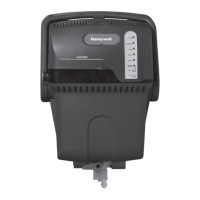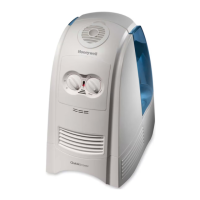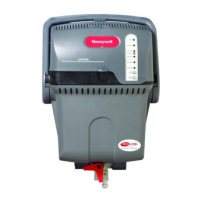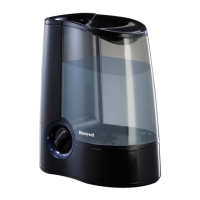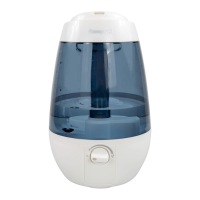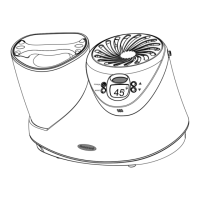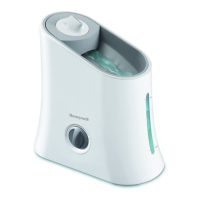YOUR NEW
Electrode Steam
Steam Generation
• Once the unit receives a demand signal and the safety loop between terminal 1 and 2 is closed, the humidier
closes the contactor and measures the electrical current.
• If the demand is lower than the actual output the inlet valve is kept closed and output is reduced by letting the
water level in the cylinder decrease by evaporation.
• If demand is higher than the actual output, after a brief delay the ll valve is activated and water ows into the
ll cup. Water from the ll cup ows into the bottom of the cylinder through a hose connected to the drain valve
housing.
Note: The cylinder is gravity fed from the ll cup. If backpressure from the steam line is too high it will cause water
to back up in the ll cup and ow down the overow line to the drain.
• As soon as the water in the cylinder comes in contact with the energized electrodes, current ows through
the water. The resistance of the water to the electrical charge generates heat and in turn steam. The electrical
current (and steam output) increases as the level of water increases, as more of the electrode becomes
submerged. The unit continues to ll until the current matches demand or the high water sensor detects a high
water level.
• The Electrode Steam repeats the ll and boil down cycle repeatedly to match output to demand.
• Over time minerals in the water will adhere to the cylinder electrodes. The humidier will automatically ll to a
higher water level to maintain full capacity during the life of the cylinder. Eventually because of scale formation
it will no longer be possible for the humidier to reach its full capacity. The Electrode Steam software monitors
this condition and, when detected, will stop operating and ash the yellow LED in a repeating sequence of 4
ashes.
Drains
• As steam is produced, minerals are left behind, increasing the conductivity of the water. The Electrode Steam
patented auto adaptive cycle will monitor the water conductivity and perform drains to maintain the water at
optimal conductivity for peak performance.
• The auto adaptive cycle ensures cylinder life is maximized. It does this by keeping the tightest control and most
efcient use of water during the entire cylinder life.
Steam Distribution
Steam generated by the humidier may be introduced into the air in several different ways. The most common
method for adding the steam into the air is to mount a steam distributor tube in a supply air duct.
Steam Line
The steam line between the cylinder steam outlet and the distributor serves two purposes: it is used as a conduit
to transfer the atmospheric steam from the humidier to the distributor, as well as providing a means to remove
condensate.
Condensate Return
Whenever steam is distributed condensate is formed in the distribution system. Insulating steam lines is one
important way to reduce the amount of condensate formed. Steam lines are sloped so that condensate does not
collect in the lines and create a restriction to steam ow. The condensate must be collected and removed from the
system so that it does not build up and leak into the duct. Condensate can be returned to the Electrode Steam ll
cup to reduce water waste or can be fed to drain.
How does the Electrode Steam work?
Steam Humidication System 33-00165—01
4
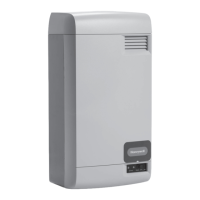
